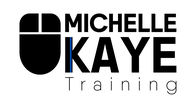Returning to work after a break so often means returning to a full inbox!
You’ve had some time off (and I hope that you had a chance to relax and unwind a bit), now it’s time to get back in the swing of work. Like most of us, I’m sure that the first thing you do is open Outlook and check your emails.
Maybe your inbox is under control, or like so many people there’s too many emails and you need to deal with them.
I’m sharing my process for dealing with email overwhelm.
The ‘Multi-Pass’ Process
My process involves going through the emails of your full inbox several times.
With each pass, you deal with a specific type of message, reducing the number down to a manageable amount.

Create a ‘To Read’ Folder
The first step is to create a new folder – I normally call it “To Read”.
In this first pass through your Inbox, look for those emails that are non-urgent. This could be emails that contain useful information, requests for something that aren’t due now.
Any email that fits into this category – move into the ‘To Read’ folder.
Important: You will need to make time later – today, this week or this month – to read through these emails!
Your inbox now contains messages that you need to work on.
Meeting Invites
The next pass, look for any meeting invites.
Depending on how long your holiday was, there are two types:
- Past meetings
- Future meetings
Past Meetings
There are the easy ones to deal with.
Check the date, and if it’s last year – just delete them. Choose what to do – i.e. let the organiser know or not. My suggestion is not to bother sending that response, the meeting is over and the organiser knows that you didn’t attend.
Future Meetings
Depending on how many meetings you get invited to, and how much time you have now, there are two options to dealing with these.
Quick and Easy – as you come to each meeting invite – accept it tentatively. When you’ve dealt with your inbox, you’ll move over to your calendar, and look at each meeting. For the ones you want/need to attend, accept them. Decline the remaining invites.
Slow and Through – work through each meeting invite, checking what it’s about, if you need to attend, and if you’re free. Now accept or decline each one as needed.
Your inbox is now much smaller, but we’re not done.
Remaining Emails
Now you can action the remaining messages.
Take each email in turn, reading it and completing the relevant tasks.
Choose if you want to start with the oldest message first, or the newest (appearing at the top of your inbox).
Tip: It’s easier to work from the top down, the default order is newest first, you can change it to be oldest first while you work through these emails.
Now that’s done, your inbox is a manageable amount.
Reminder: Remember your ‘To Read’ folder and work through those emails as well. Over the next few days work through these emails.
Related Posts
- How do I start scheduling emails to be sent?Learn how easy it is to start scheduling emails with this simple guide. Start sending the right message at the right time today!
- How to Remove Someone From Blocked ListLearn how to remove someone from your blocked list and regain connections. Unblock and restore relationships effortlessly. Learn how now!
- Should you spend money to unsubscribe?Do you have trouble keeping up with all your emails? Find out if investing in a paid unsubscribe service is the right option for you and say goodbye to messy inboxes!
- Unsubscribe from Emails For FreeStruggling to keep up with all the emails you’ve signed up for? Is there a free unsubscribe service that can help?
- Email Overload: What about Outlook Quick Steps or GMail Send and Archive?When you don’t need the power of rules or filters, but want something more than a manual process – have you heard of quick steps?







2 thoughts on “Returning to a Full Inbox?”
Set a rule that all e-mails received before 9.00am on [date] go straight into Deleted Items.
Then compose an Out-of-office along these lines :-
“All e-mails received before 9.00am on [date] will go straight into Deleted Items as I am on annual leave. If you want me to see and read your e-mail, please do not send it until I return”.
It is surprising how many e-mails are clearly unnecessary !
That’s an interesting method Paul. Not sure how well it might go over with some companies!
Although, you are absolutely correct about how many emails are unnecessary.
Comments are closed.